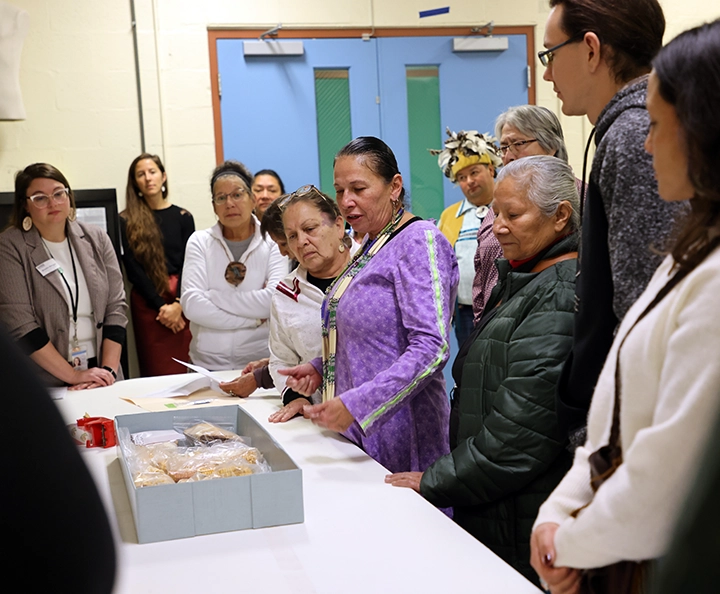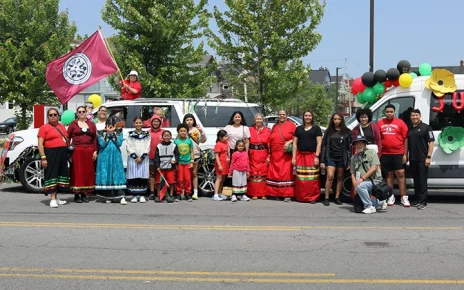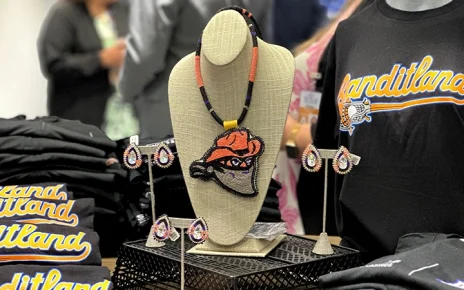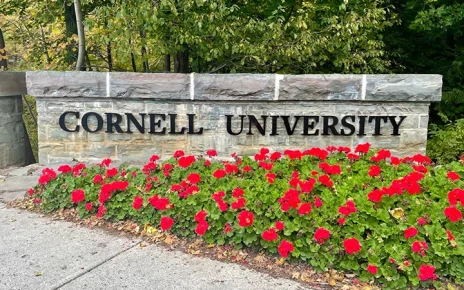By Tami Watt (Seneca Nation, Deer Clan), Editor
The Onöhsagwë:de’ Cultural Center partnered with Onondaga Farm Supervisor Angela Ferguson (Onondaga Nation, Eel Clan) to host an educational workshop on traditional methods for planting Three Sisters mounds. Ferguson is a traditional corn grower and a member of Braiding the Sacred, a non-profit network of Indigenous corn growers from the four directions working together to preserve and grow our traditional varieties of sacred corn.
Ferguson is also on a mission to return seeds to their aboriginal lands and people. Her adventures include trekking across Turtle Island to museums, private collectors and unfamiliar territories to rematriate seeds. Her work is inspiring, and her message transcends to the next seven generations. “Planting is our obligation to Etino’ëh Yöëdzade (our mother, the Earth). When seeds are given, we make a lifetime commitment and intergenerational commitment to keep them going. Planting a seed in the ground is sending it home, like sending a relative on their journey to Sky World. Your obligation as ögwe’ö:weh (Indigenous person) has been completed, let the seed do its job to grow feed the people,” explains Ferguson.
Hayden Haynes (Seneca Nation, Deer Clan), Director of The Onöhsagwë:de’ Cultural Center, connected with Ferguson back in December 2024 when she invited representatives from the Seneca Nation to join her to reclaim seeds from the Illinois State Museum’s Records and Collections Center in Springfield, Illinois. Haynes gave the seeds to the Six Nations Agricultural Society in Allegany to disperse and plant among Seneca territories. Gerri Fisher from Gakwi:yoh Farms collected seeds and returned them to the Cattaraugus Territory. Ferguson made good on her offer to share her expertise in planting and rejuvenating the seeds with Three Sister mounds. In early June, she held open discussion forums for two days at the Onöhsagwë:de’ Cultural Center.
Not only did Ferguson share knowledge and give a demonstration on planting Three Sisters mounds, but she also gave back all the Seneca seeds she had in her seed bank in Onondaga. Some of the seeds came with an amusing or engaging spiritual tale on how she recouped them, others have been there for so long, names and origins have been lost to time. Labels on the mason jars read 800-year-old tobacco seeds, 800-year-old cave beans, Burnt House Village beans, Seneca Long Ear White Corn, Seneca Bear Dance Corn, and Crook Neck Squash. Again, Haynes handed the seeds over to the Six Nation Agricultural Society in Allegany.
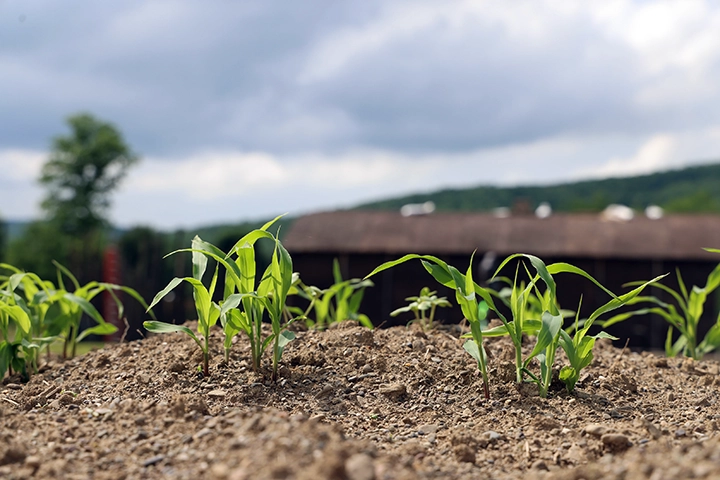
“This little jar of 800-year-old tobacco seeds is a gold mine. Someone successfully grew these seeds in 1999 so they will grow. Miraculously, seeds this old are still alive! Our seed songs, medicines and ceremonies wake them up. They come back to life,” shares Ferguson. The 800-year-old tobacco seeds have been planted by the Six Nations Agricultural Society in Allegany this June and they have germinated. The leaves and seeds will be harvested for ceremonies at the Coldspring Longhouse.
At the Onöhsagwë:de’ Cultural Center, volunteers and staff planted white corn and Three Sisters mounds under the direction of Alan Dowdy (Tuscarora Nation, Turtle Clan), Lead Cultural Interpreter. Dowdy led volunteers in hoeing out a ditch in a straight line and planting four white corn seeds 6-8” apart. “One seed is for the Creator, one seed is for the animals, one seed is for the people, and the last seed is for ourselves,” explains Dowdy.
A Hodinösho:ni’ seed bank and yearly seed exchange is a dream of Ferguson’s along with food preservation and food sovereignty. Each Nation having their own agriculture efforts is a step in that direction, back to thinking as a whole Confederacy. Historically, Senecas grew hundreds of acres of white corn through Ohi:yo’ (Allegany Territory) and Ganondagan. Corn was harvested and stored to feed the entire Confederacy and traded for essential goods.

